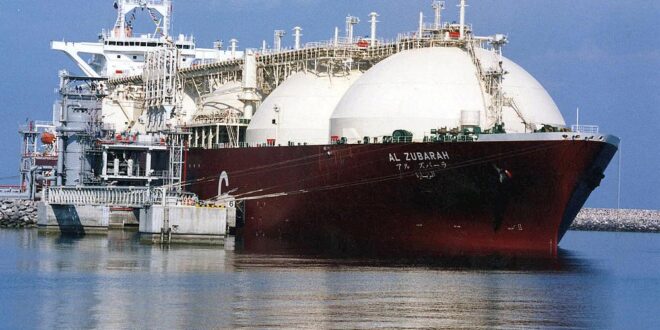The spot market for liquefied natural gas (LNG) is calmer than usual for this time of year as inventories in both Europe and Asia are high, and the weather is still mild.
Demand in Europe and Asia is rising in November compared to the warmer October, but LNG spot prices in Asia have dropped in the past three weeks, and the benchmark prices in Europe have also declined in recent days amid eased concerns about Eastern Mediterranean supply and nearly full EU natural gas storage sites.
However, the calmness in the LNG market could turn into volatile turbulence again if fresh supply concerns emerge and if this winter is really cold in Europe and/or Asia.
Governments and markets should be anything but complacent as the winter approaches as risks of tighter markets and soaring prices remain, analysts and forecasters say.
LNG demand in both Asia and Europe has increased this month compared to October, according to data from Kpler cited by Reuters’ columnist Clyde Russell.
Imports in Asia are set to rise to 22.67 million metric tons in November from 21.18 million tons in October, with China leading imports and gains. Japan’s LNG imports are estimated to be flat this month compared to last month, while Indian imports are expected to drop from October as higher prices last month may have discouraged price-sensitive Indian buyers from purchasing more LNG for November.
European LNG imports are also on the rise and expected this month to be at their highest level since May, according to Kpler data.
Amid expected higher demand at the start of the heating season, LNG imports into northwest Europe are expected to soar by 30% in November compared to October, per preliminary estimates from LSEG.
“The heating demand kicks in and there are forecasts of colder weather,” Wayne Bryan, head of European gas at LSEG, told Montel at the end of October.
Despite the higher demand and LNG arrivals in both Europe and Asia, the average LNG spot price for December delivery into Northeast Asia declined last week by 3% from the previous week to $16.5 per million British thermal units (MMBtu), according to estimates from industry sources quoted by Reuters.
The spot LNG price in Asia has now fallen for three consecutive weeks amid milder weather and high inventories. In addition, Chinese energy giants are reselling more cargoes in the rest of Asia this year compared to last year in a bid to eke out trading gains and balance the gas supply, according to China’s recent customs data reported by Reuters. The higher volume of LNG resold to other buyers in Asia also offers a buffer against supply disruptions and concerns, including from Australia and from the fresh U.S. sanctions on the Russian project Arctic LNG 2.
The Calm Before The Storm?
The LNG market seems calmer than usual for November when heating demand is typically rising in both Europe and Asia.
Yet, no one can predict how cold this winter in the northern hemisphere will be. Last winter was mercifully warmer than usual in Europe just as the continent was scrambling to import higher LNG volumes despite spiking prices to replace the lost Russian pipeline gas supply.
It’s not certain this winter will be equally warmer than usual, and weather will be the driving force behind the LNG market and prices.
Weather is one of the biggest unknowns, Colin Parfitt, vice president for midstream at Chevron, told Bloomberg earlier this month.
“We’re not home free yet. There is a risk of volatility,” Parfitt said.
Last month, Vitol Group’s chief executive Russel Hardy said that some of the lost European demand for natural gas due to the energy crisis and record-high prices could never return.
“For gas, demand has plummeted in Europe, with double-digit percentage reductions. We expect some of the lost demand to be permanent,” Hardy told the Energy Intelligence Forum.
Even with a structurally lower gas demand, Europe and its biggest economies are not out of the woods yet—and a cold winter could reveal the vulnerability to supply.
Gas supply disruptions continue to be a risk for Germany, the chief executive of the country’s biggest utility, RWE, said last month.
“We don’t have any buffer in the gas system,” RWE’s chief executive officer Markus Krebber told German publication WirtschaftsWoche, adding that Europe’s biggest economy must accelerate the construction of gas import infrastructure to avoid future shortages.
Sustained colder-than-normal temperatures and unplanned outages at LNG export facilities are the key risks to sufficient gas supply this winter, the U.S. Energy Information Administration said last week.
“Relatively full natural gas inventories in the United States and Europe as well as expanded global export and import capacity for liquefied natural gas (LNG) have improved the likelihood that supply will be sufficient to meet demand in global natural gas markets as we enter the upcoming 2023–24 winter season (November–March),” the EIA noted.
“However, risks to this balance are associated with possible extreme weather and supply issues.”
According to the U.S. administration, “Severe cold weather or unplanned supply outages could lead to significant price spikes and affect global natural gas balances.”

 Iran Energy News Oil, Gas, Petrochemical and Energy Field Specialized Channel
Iran Energy News Oil, Gas, Petrochemical and Energy Field Specialized Channel



